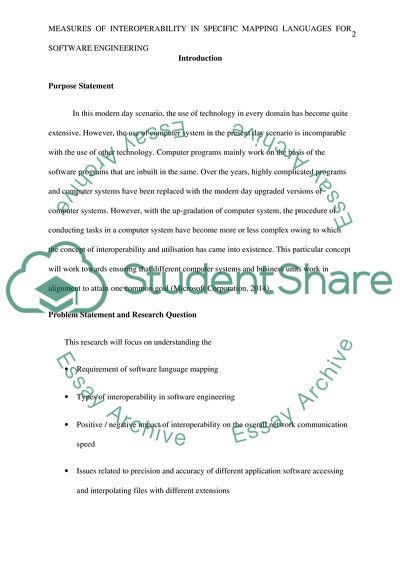Cite this document
(The Concept of Interoperability and Utilisation Case Study Example | Topics and Well Written Essays - 2000 words, n.d.)
The Concept of Interoperability and Utilisation Case Study Example | Topics and Well Written Essays - 2000 words. https://studentshare.org/information-technology/1842220-measures-of-interoperability-in-specific-mapping-languages-for-software-engineering
The Concept of Interoperability and Utilisation Case Study Example | Topics and Well Written Essays - 2000 words. https://studentshare.org/information-technology/1842220-measures-of-interoperability-in-specific-mapping-languages-for-software-engineering
(The Concept of Interoperability and Utilisation Case Study Example | Topics and Well Written Essays - 2000 Words)
The Concept of Interoperability and Utilisation Case Study Example | Topics and Well Written Essays - 2000 Words. https://studentshare.org/information-technology/1842220-measures-of-interoperability-in-specific-mapping-languages-for-software-engineering.
The Concept of Interoperability and Utilisation Case Study Example | Topics and Well Written Essays - 2000 Words. https://studentshare.org/information-technology/1842220-measures-of-interoperability-in-specific-mapping-languages-for-software-engineering.
“The Concept of Interoperability and Utilisation Case Study Example | Topics and Well Written Essays - 2000 Words”. https://studentshare.org/information-technology/1842220-measures-of-interoperability-in-specific-mapping-languages-for-software-engineering.


